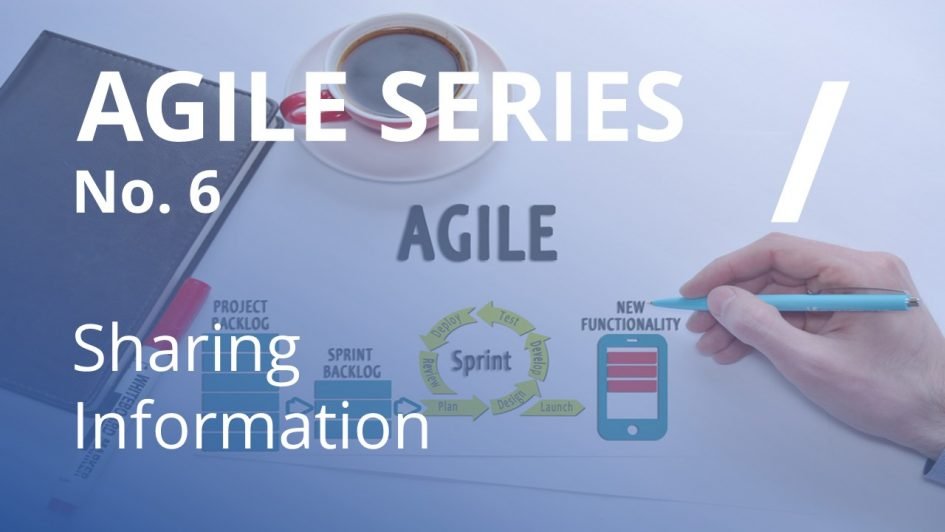
Agile Series No. 6: Sharing Information – What is your team really thinking?
Welcome to the sixth of twelve articles where we talk about the do’s (and some of the don’ts) of Project Managing Agile Projects. During this series we will work our way through the 12 principles of the Agile Manifesto and talk about how it relates to you, a project manager and your project.
The most efficient and effective method of conveying information to and within a development team is face-to-face conversation (Beck, 2001)
Not long ago (January 2020 in fact!) I would of (and did) argue that the only way to effectively and efficiently communicate information is face-to-face. I would have argued that working from home, whilst can work, is not an effective method of Project Management and that a lot more can be achieved whilst at work than having employees working at home.
However, since COVID-19, where this has not been possible, I have been forced to change my work style to project managing remotely. It has become apparent during these times that sharing information and communication is extremely important. Even now, I insist that when having online conversations with team members that we use web cameras and microphones. I’ll explain why.
The purpose of a conversation is to transfer or share information between the sender and the recipient. Unlike the written form, conversation is more than just words. When having face-to-face conversation (in person or via video online) you can verify the messages you are getting via the non-verbal communication.
Non-verbal communication, sometimes referred to as manual language, is the process of sending and receiving messages without using words, either spoken or written. Looking at the below image, you can see that there are 7 types of non-verbal communication, however the one, as a Project Manager, you should never overlook is Kinesics or in other words, body language. Take note of what your teams are doing in the room around you (or on online in your Zoom meeting). Do they look engaged? Bored? Are they offering solutions? Do they look distracted? Follow your feelings and don’t be afraid to ask what people think or feel.

Use these meeting to share important information with your team. But look for signs of approval or disapproval. Take note of the responses (both verbally and non-verbally) and remember that your team is also watching you, so it is important that you look interested and are not distracted and that your genuinely listening.
In summary, nson-verbal responses from your team help you gauge what they are thinking about the information you are sharing. Use this information to help guide your decisions. Remember your team is also watching you!
In the next article, we change track a little. We start looking at what we, as Project Managers, should be delivering: Solutions! And how we can measure our progress.
References
Amerongen, R. v. (2008, April 23). Agile software development, the principles. Principle 6: The most efficient and effective method of conveying information to and within a development team is face-to-face conversation. Retrieved from AMIS Technology Blog
Ammouri, Y. M. (2015, December 2015). Agile Software Development Basics and fundamentals. Retrieved from Code Project
Beck, K. B. (2001). Agile Manifesto. Retrieved from Agile Manifesto: http://agilemanifesto.org
Hughes, K. (2019, 07 31). The Agile Manifesto, Explained. Retrieved from Project Manager: projectmanager.com/blog/agile-manifesto-explained
Norduist, R. (2019, July 26). What is Nonverbal Communication? Retrieved from ThoughtCo.: https://www.thoughtco.com/what-is-nonverbal-communication-1691351 Zoom. (2020, 04 12). Zoom. Retrieved from Zoom: zoom.us
Check our Agile Serie Blogs:
Agile Series No. 1: Great Project Management Demands Great Customer Satisfaction
Agile Series No. 2: Road to Change – Embrace Project Change
Agile Series No. 3: The importance of delivering value frequently & consistently
Agile Series No. 4: A Great Project Manager Participates
Agile Series No. 5: Motivated Teams Deliver Great Projects
Agile Series No. 6: Sharing Information – What is your team really thinking?
Agile Series No. 7: You’re moving forward when the customer receives the delivery
Agile Series No.8 – It’s both a marathon and a sprint!
Agile Series No.9 – Solutions are great, band-aids are not!
Agile Series No.10 – Keep It Simple!
Agile Series No.11 – Build Trustworth Self-Organising Teams
Agile Series No.12 – Reflection
Are you interested in knowing more about it?
Let’s talk, we can help you!
Check out the Lucid Insights blog
There is a variety of content that may help you to improve your business!







